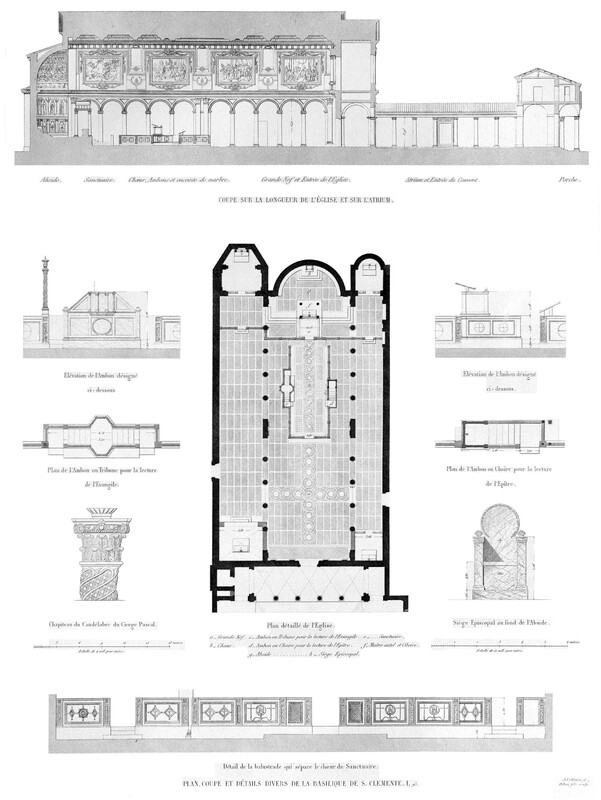San Clemente
Item
- Title
- Drafter
- City
- Location
- Building Creation Date
- Century
- Description
- Techniques
- Classification
- Building Type
- Documentation Type
- Style/Period
- Cultural Context
- Subject
- Source
- Access Rights
-
San Clemente
-
J. J. Olivier and Hibon, Auguste (French engraver and etcher, 1780-1857)
-
Rome, Lazio, Italy
-
Italy
-
ca. 1750 (alteration)
-
ca. 380, 1099-1118 (creation)
-
4th century CE
-
18th century
-
longitudinal section of church and the atrium
-
plan of the church
-
details, sections
-
plans
-
detail views, elevations
-
A standard type of basilica and a standard type of baptistery evolved and spread throughout northern Italy, and from North Africa to southern Spain and Gaul. The standard type of basilica was meant to hold a congregation of between 800 and 1400. It consists of a nave flanked by aisles and terminating in a semicircular, sometimes rectangular, apse
-
a narthex and atrium sometimes feature at the west end. This standard type of basilica is known as early as the late 4th-century church of S Ambrogio at Milan, which has three aisles and a semicircular eastern apse, a plan that became widespread in northern Italy in the 5th century. After ca. 380 examples of the type at Rome include S Clemente. The schola cantorum is a term applied to nave chancels in medieval Roman churches on the basis of a supposed association with the eponymous body of papal chanters. This association originates in the misinterpretation of a 16th-century description of S Clemente by Ugonio.The form of Early Christian nave chancels was not standardized. Those at S Giovanni in Laterano (4th century) and at S Clemente (6th century) were apparently narrow passageways constructed of low parapets held together by posts and so lightweight that they did not need foundations. Built over site of fourth century church
-
line drawings (drawings)
-
Architectural Documentation
-
plans
-
elevations
-
sections
-
Early Christian
-
Italian
-
architectural exteriors
-
architectural interiors
-
music
-
Letarouilly, Paul Marie. Edifices de Rome Moderne. Paris: A. Morel, 1868, 248.
-
Public Domain
- Item sets
- Architecture Illustrations
“San Clemente”, Arch Design Images, accessed December 22, 2025, https://exhibits.lib.ttu.edu/s/archlib/item/18986


